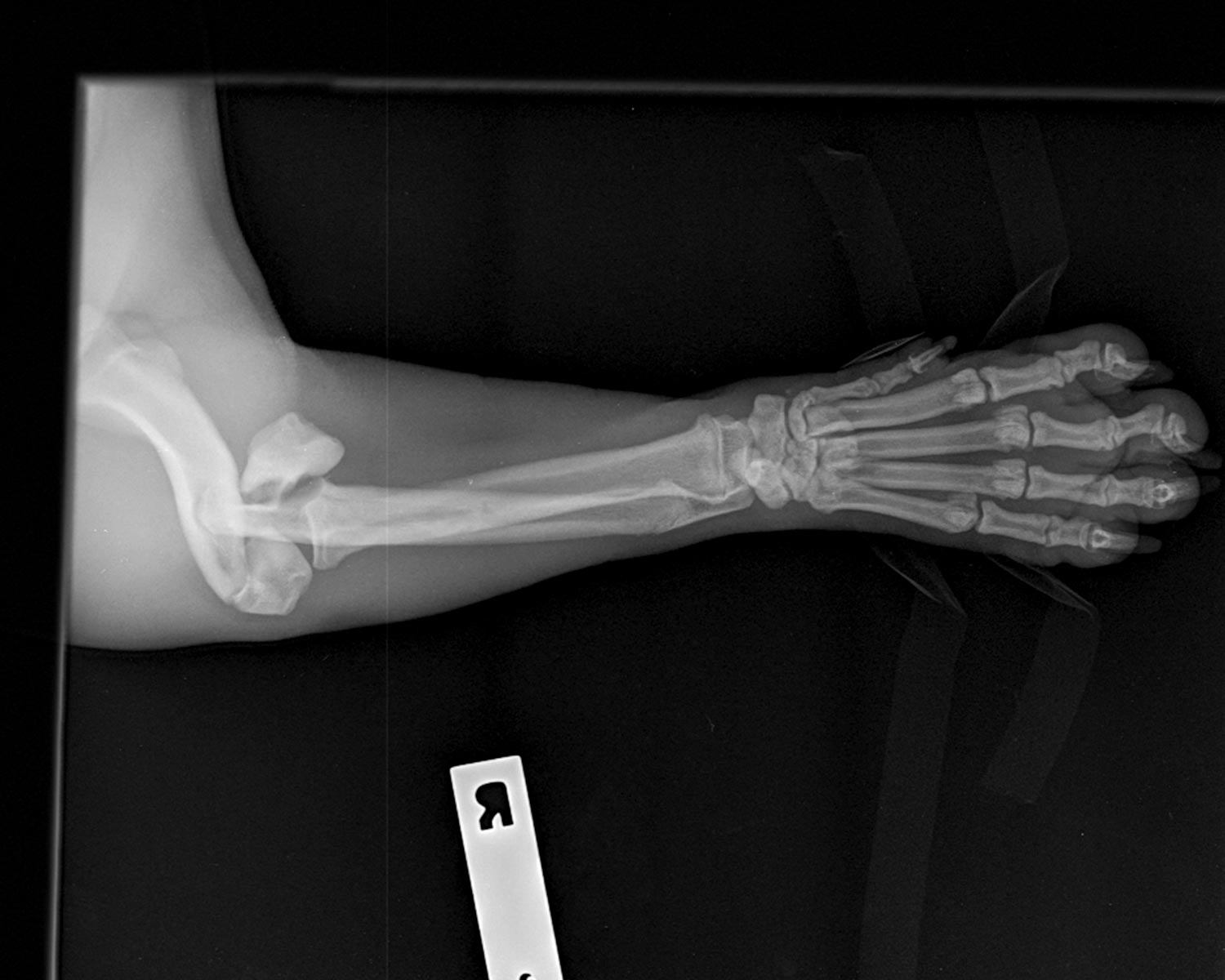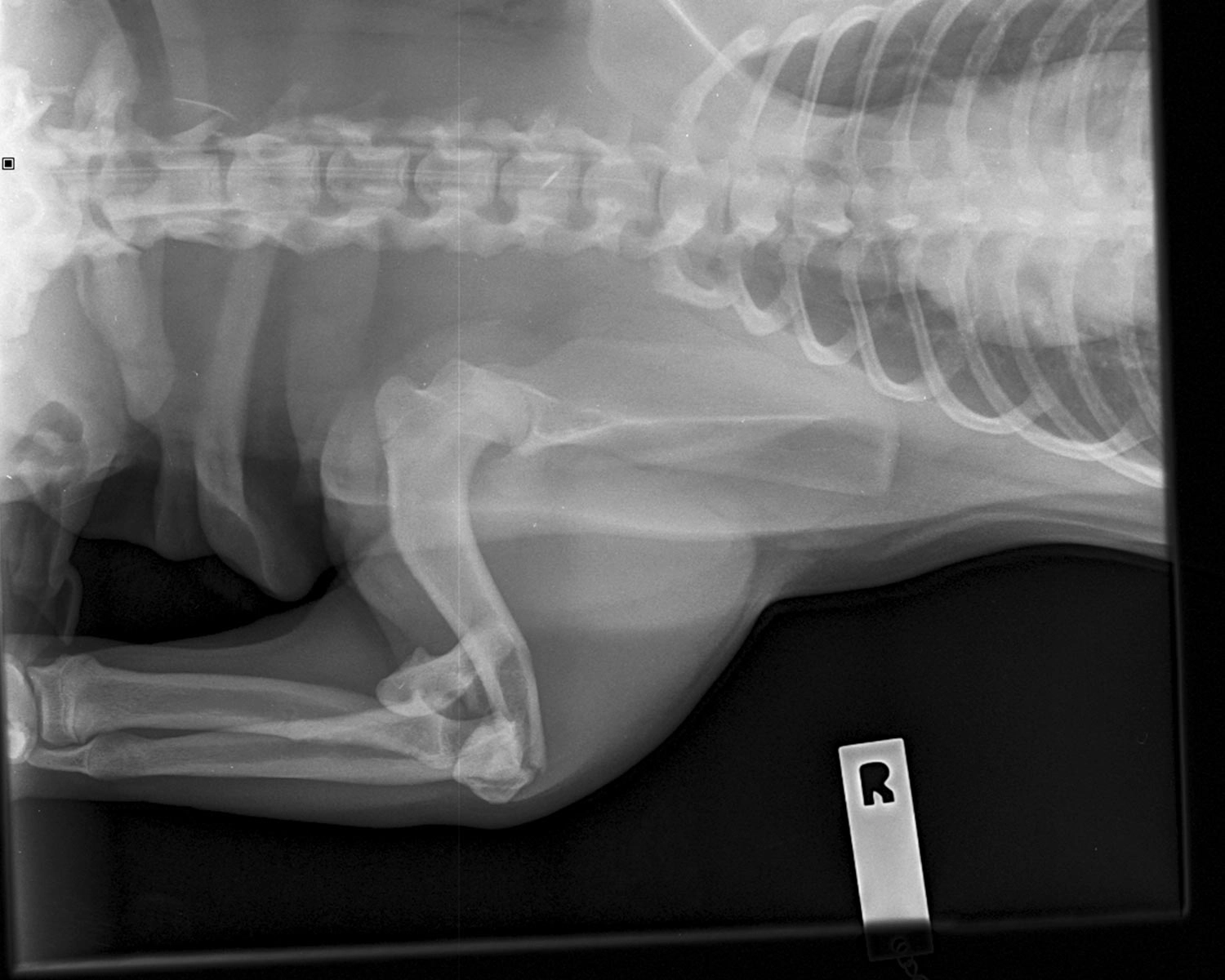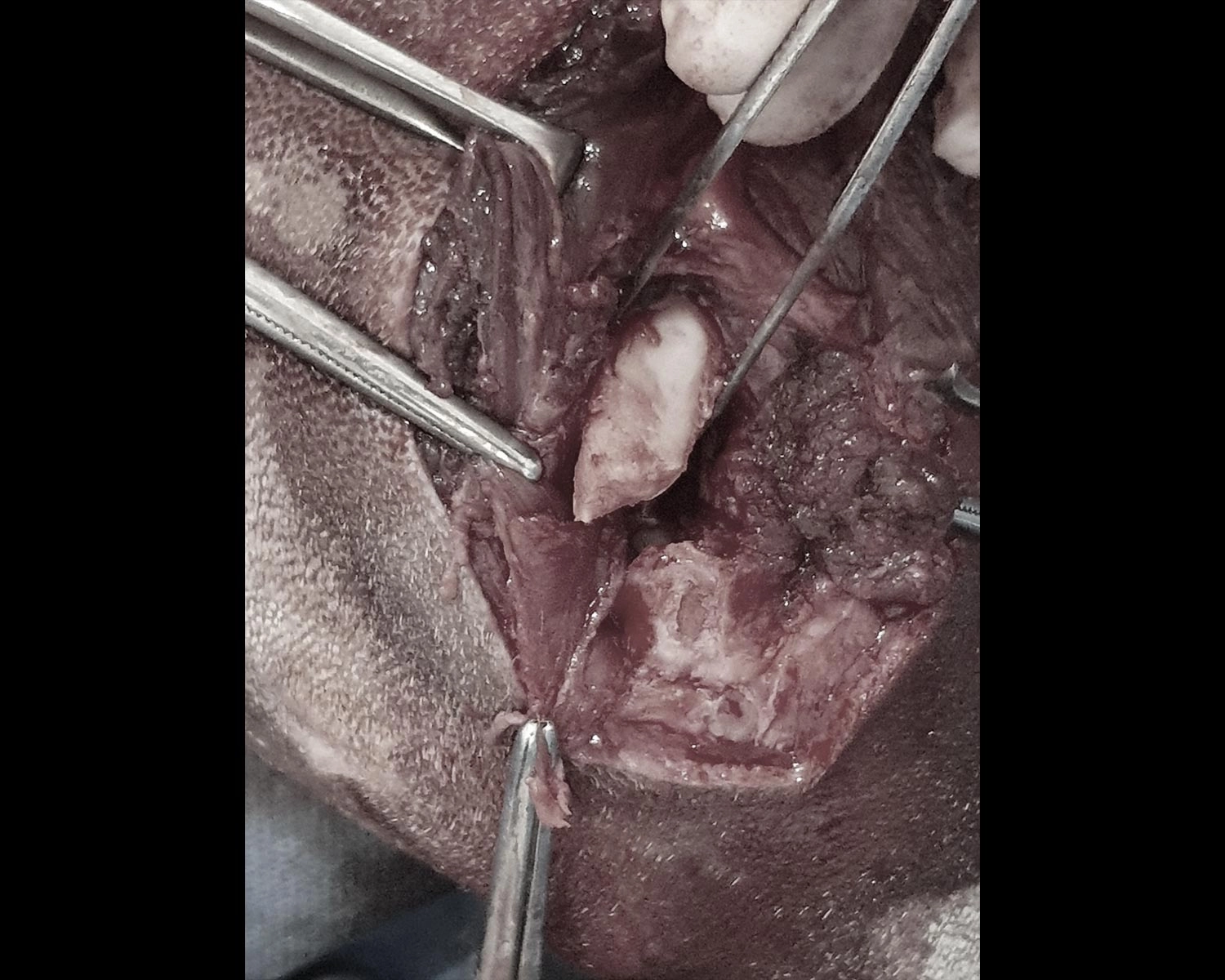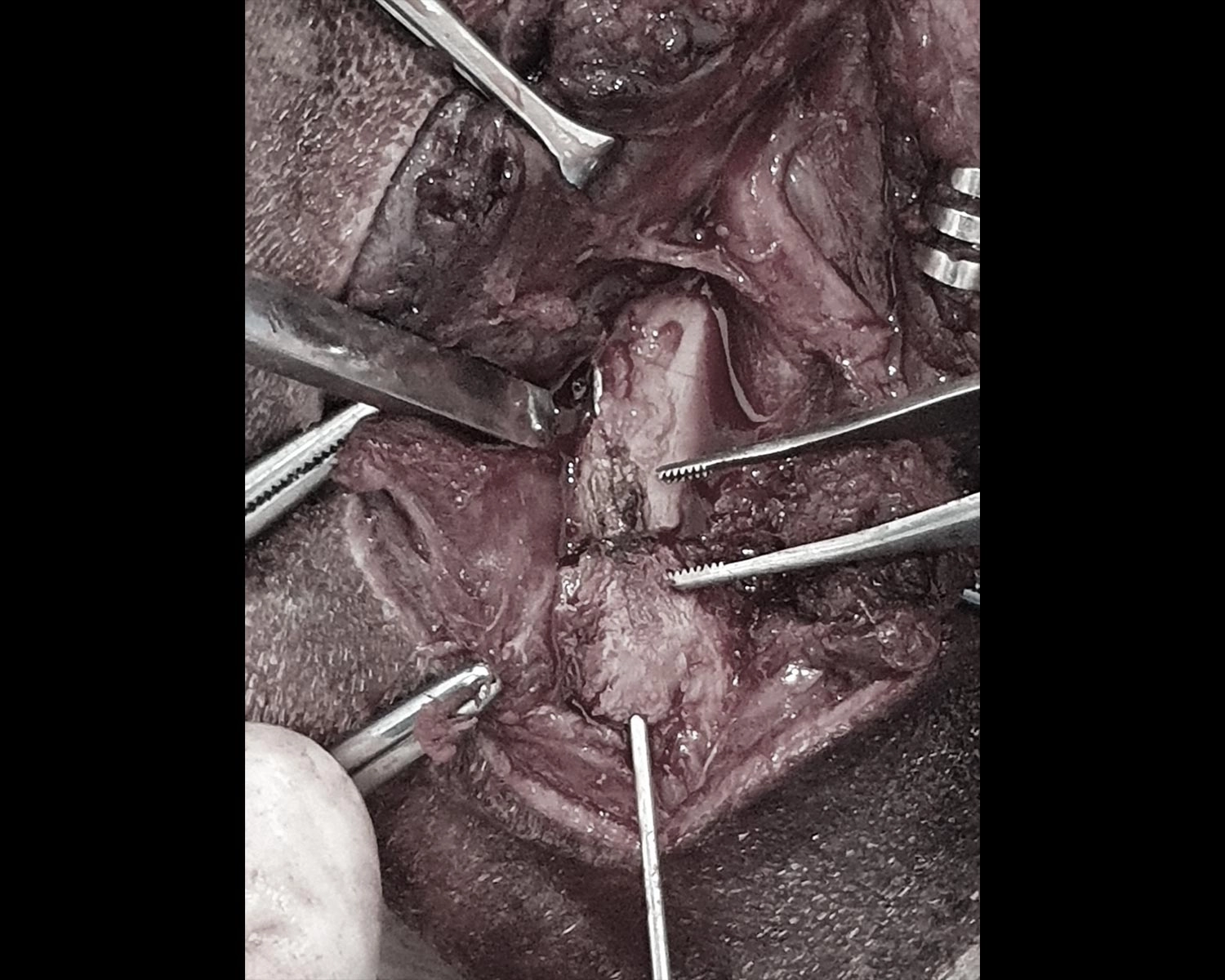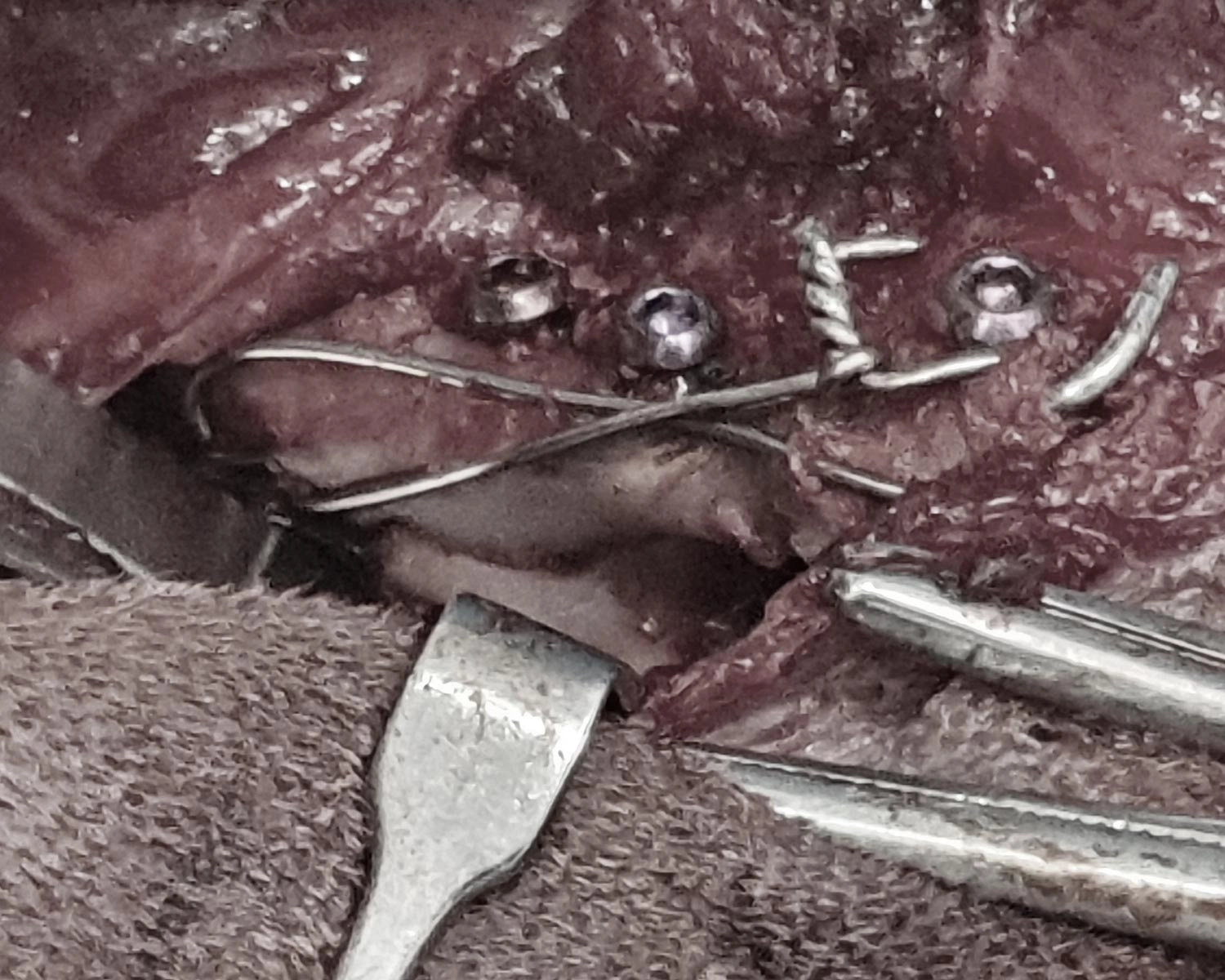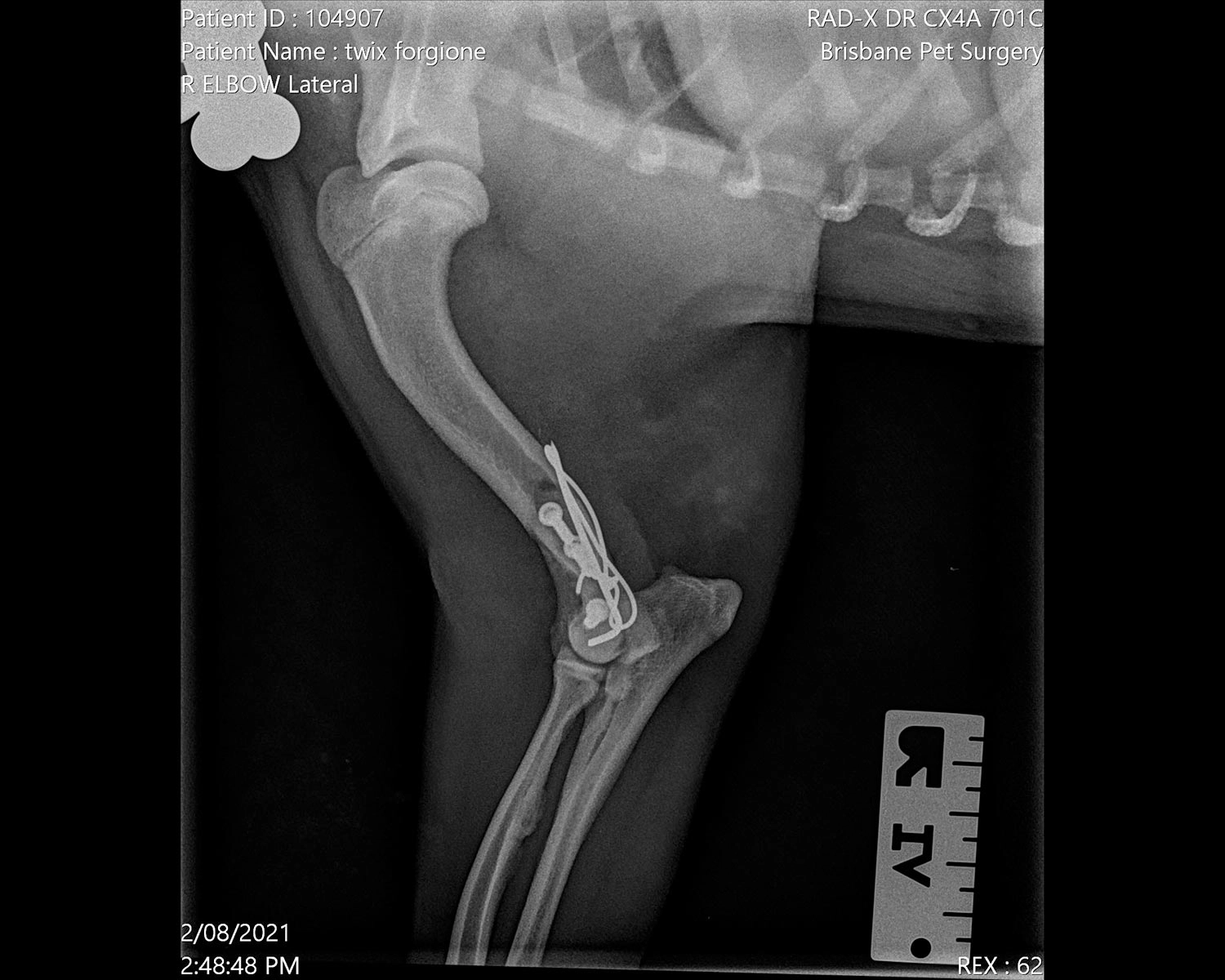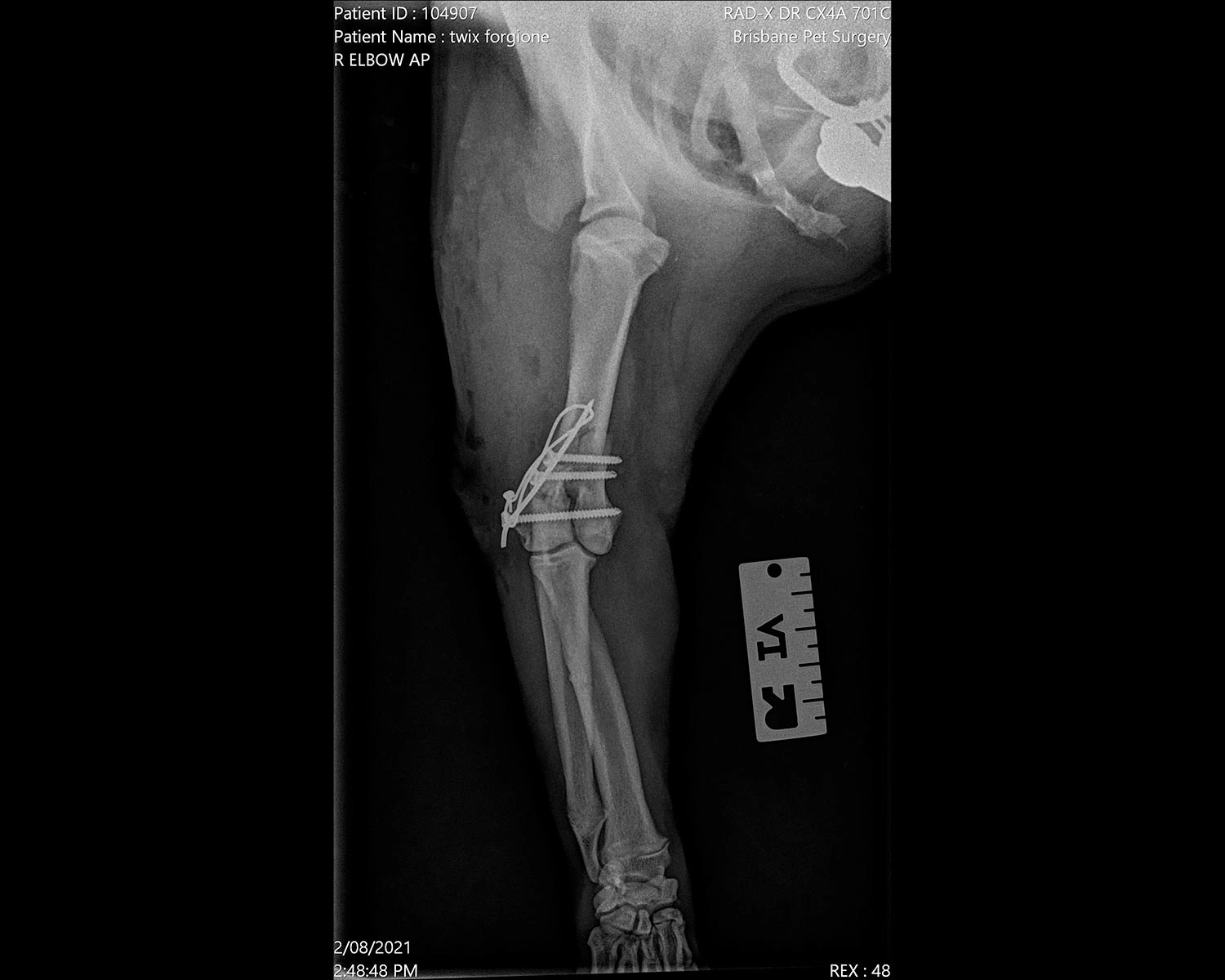Twix – an 8 month old French Bulldog with a Right Fore Distal Humerus
After presenting to the clinic with lameness in his right forelimb, x-rays on boisterous French Bulldog Twix revealed that he had suffered a complex fracture of the distal condyles of the humerus.
An age specific injury, this sort of fracture is most commonly seen in young or growing dogs and usually occurs as a result of jumping off something (where the radius and ulna are driven upwards through the end of the humerus when the dog lands on their forelegs).
As well as a fracture between the condyles and between where the right condyle joins the humerus, Twix’s case was more complicated as it also involved a shaft fracture of the distal humerus.
In Twix’s case, the gap between the fractured condyles was reduced using a clamp before being held together with a screw. To stabilise the facture, we placed a pin through the condyle and into the distal humerus. To stabilise the fracture between the shaft and the left condyle, we used a clamp and placed 2 screws through the distal humeral shaft.
After being admitted, Twix was placed onto IV fluids via a catheter, induced with propofol slow IV to effect and intubated.
We opened the skin over the affected distal humeral area (or elbow) to expose the fracture. It was discovered that the elbow had been medially dislocated and was, therefore, unable to be reduced so we placed it in the correct position, then the condyles were clamped and drilled. We used a titanium screw to stabilise the condyle separation, some K-wire was placed through the lateral condyle and into the distal humerus, and finally the medial distal humeral arm fracture could be reduced and stabilised. To further stabilise the lateral condyle fracture, a figure of 8 wire was placed across it.
Absorbable sutures were used to close the muscles and sub-cut tissue, then absorbable ford interlocking was used to close the skin.
A week after the surgery, Twix returned to BPS to have his bandages changed. He then returned every 2 weeks for further bandage changes until the wound had healed. He was put on 6 weeks cage rest, followed by 2 to 4 weeks of lead walks, then finally was allowed off-lead 10 weeks after the surgery. After 6 to 8 weeks of recovery, x-rays were taken of the affected area to check on his progress and healing.
Cost
At Melbourne Pet Centre, this procedure typically costs between $1800 and $2500, which is far less than the $6000+ it would cost at a referral centre. In Twix’s case, his surgery cost $2,230.
Procedure photos
